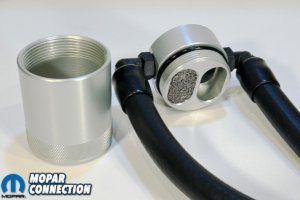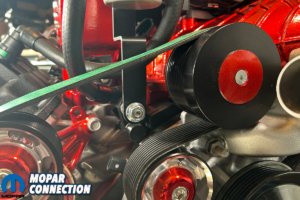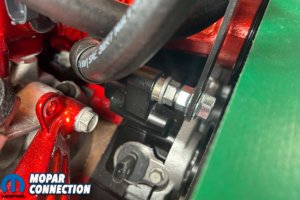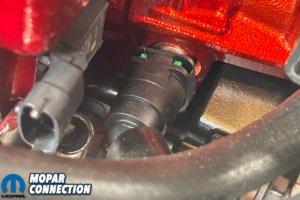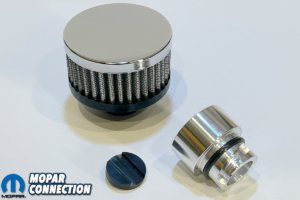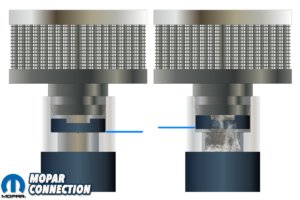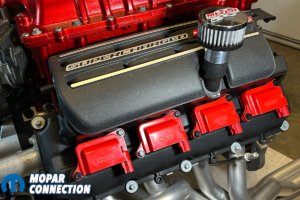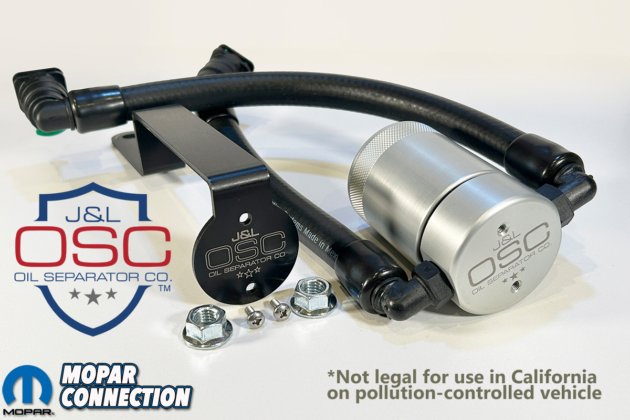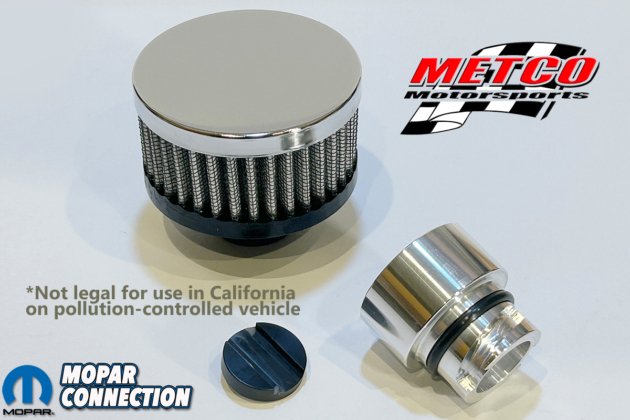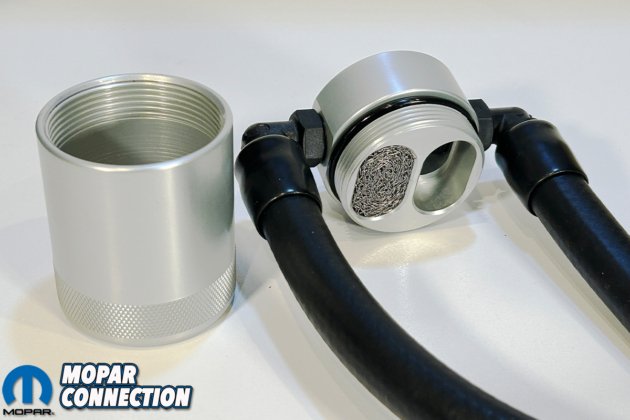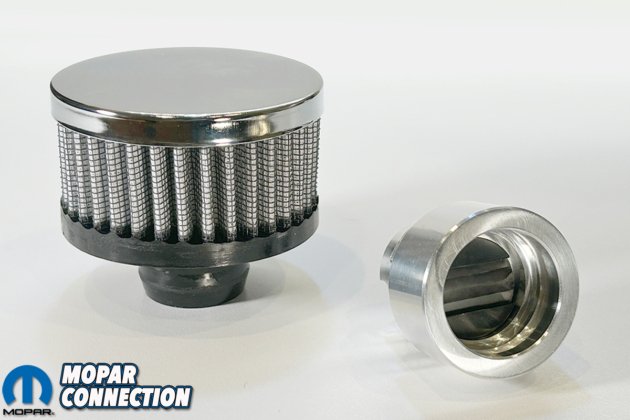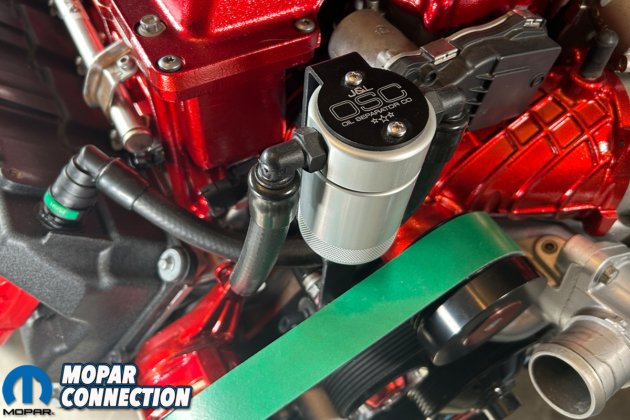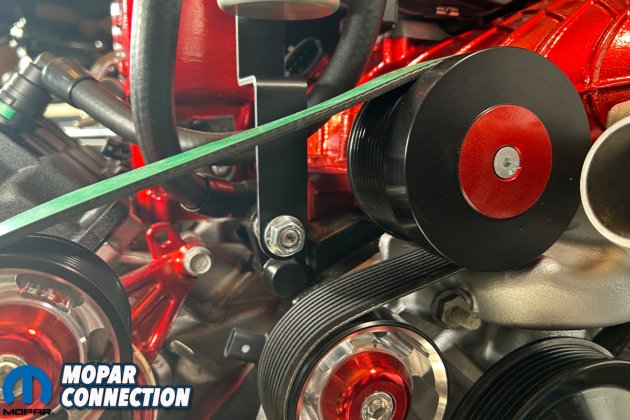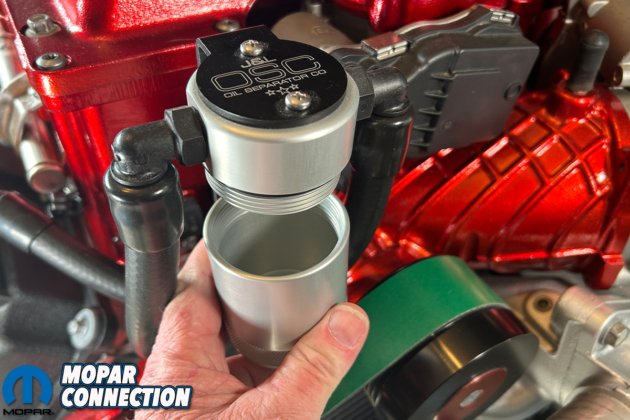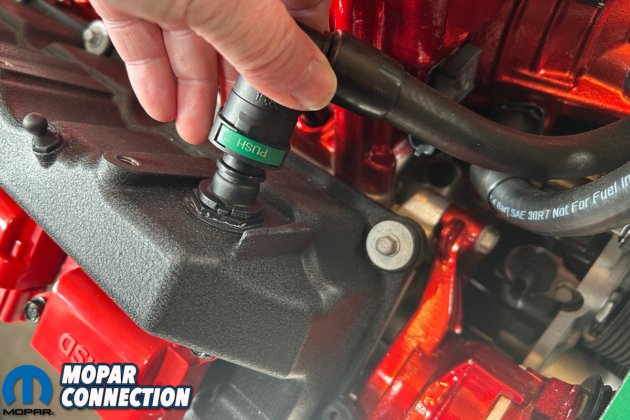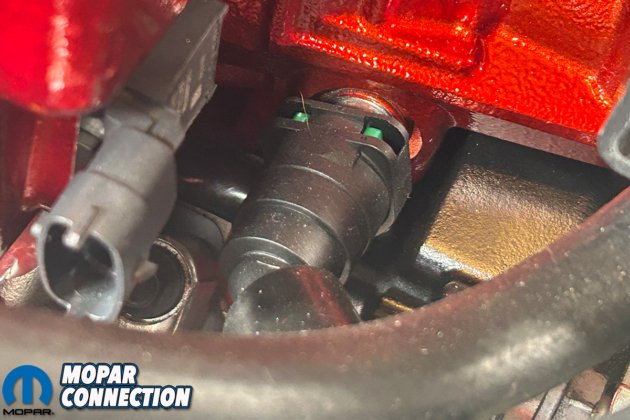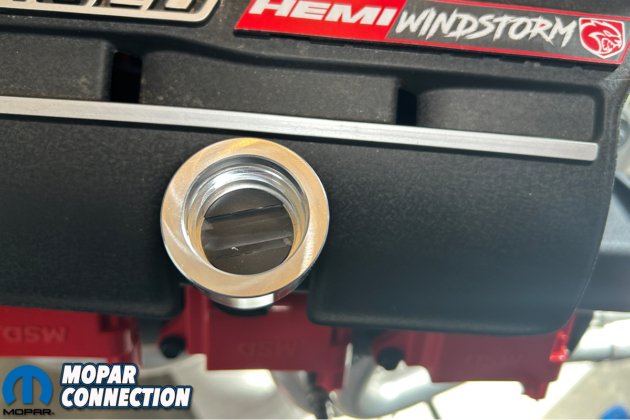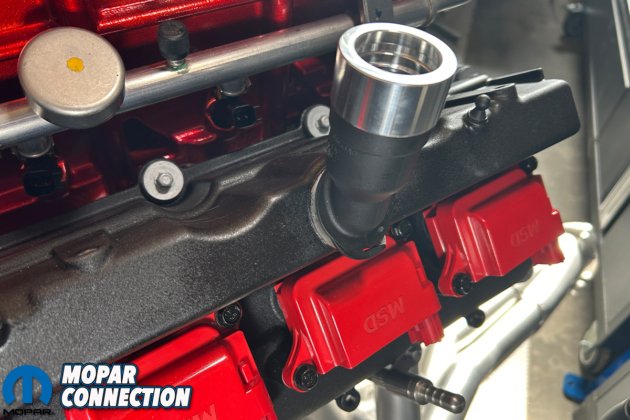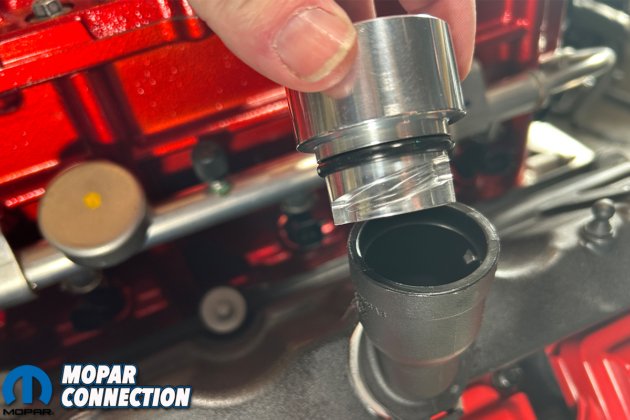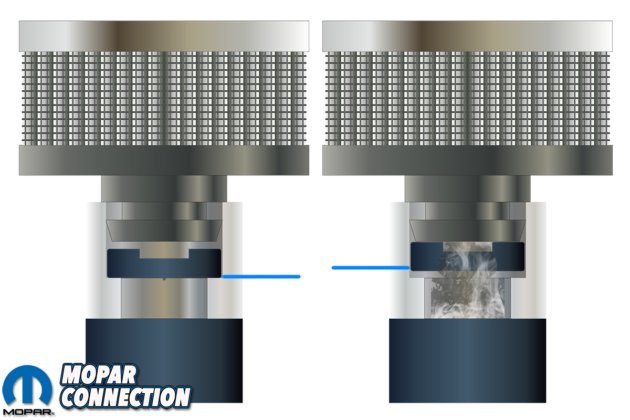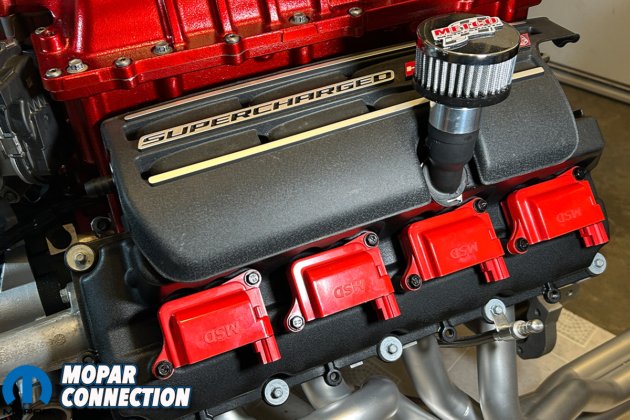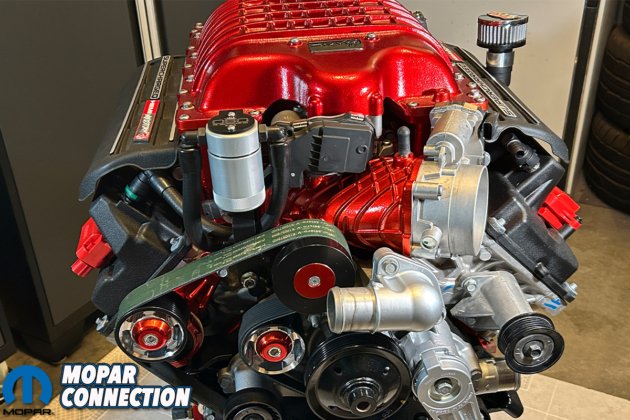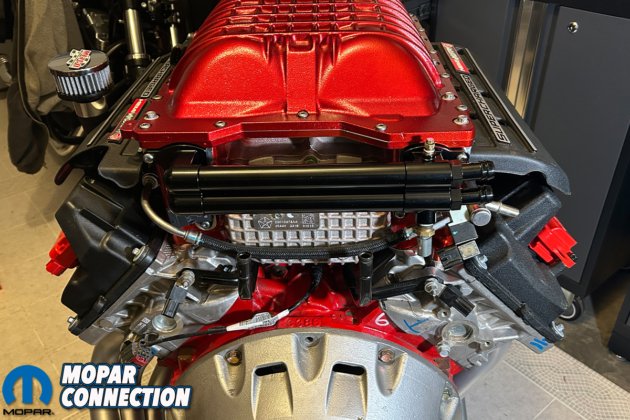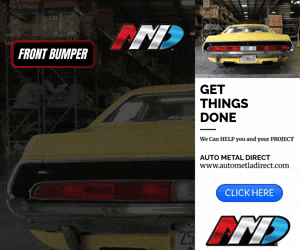 While technology has changed drastically over the years, there’s still that one little area that rears its ugly head and creates a mess of things. On a classic Mopar, you might have noticed the oily residue under your air cleaner, or the oil that collects in your intake manifold. It’s not something you can avoid, and it even happens with modern engines. It’s caused by the oil being heated for extended periods, and the vapor it creates is referred to as the oil’s volatility.
While technology has changed drastically over the years, there’s still that one little area that rears its ugly head and creates a mess of things. On a classic Mopar, you might have noticed the oily residue under your air cleaner, or the oil that collects in your intake manifold. It’s not something you can avoid, and it even happens with modern engines. It’s caused by the oil being heated for extended periods, and the vapor it creates is referred to as the oil’s volatility.
As crankcase pressures increase, oil vapors pass through your PCV system and into your intake, and can collect in low spots along the way. You can’t get away from that oily mess, but you can make improvements and clean up your intake in the process. A Gen3 Hemi is the perfect candidate for cleaning up what goes through your intake manifold, and to help with that process we reached out to our friends at J&L OSC and Metco Motorsports.
We acquired two components from the aforementioned companies: an oil separator, and a valve cover breather, respectively. These two components go hand in hand for keeping much of that unwanted oil out of your intake, performing an important function in positive crankcase ventilation. The first thing you might wonder is: if it’s good for your engine, then why wouldn’t the OE develop these products in the first place?
We asked that very question to Vinny Conte, owner at J&L OSC, and he brought up a valid point, one that drives in deep for those living in the so-called Golden State of California. “Manufactures don’t install them due to 50-state legality issues, and also the fact that the units would need to be serviced,” he told us. While there are some options for an oil separator in some manufacturer’s performance catalogs, it seems that for the average consumer it’s just another item that would get ignored.
“Many vehicles these days don’t even have dipsticks for the transmission, or even engine oil,” he continued. “Adding an item that the end user has to service for the everyday appliance driver isn’t ideal.” Considering the neglect that many vehicles see over the course of a few years, it does seem like servicing the oil separator would likely fade off the to-do list, or get put on the back burner indefinitely.
So what is an oil separator, you might ask? You may have heard of it referred to as a catch can, and Vinny tells us they are essentially the same thing. While some catch cans may simply be an end point in the system, the oil separator effectively separates the oil from the crankcase ventilation process, and disposes it into the container to be serviced (emptied and cleaned) at mileage intervals.
He tells us that the main benefit of the oil separator over the OEM routing of the hoses is to keep the intake tract clean and void of oil and contaminants. When it comes to a specific engine, like the Hellcat, it will also keep the oil residue from getting into the two intercoolers inside the supercharger. In our application, that being a 2019 Redeye, once the supercharger was removed for detailing and painting, there was a bit of oil residue inside, which would end up burning in the combustion chamber, where it all started.
Keeping this oil residue out of the intake tract can also slow down the carbon buildup on intake valves over time, which would rob performance and efficiency. Boosted applications will produce more crankcase pressure than naturally aspirated, so it’s particularly important to keep oil out of the intake tract and combustion chamber to help prevent engine knock/pre-detonation.
Oil separators are more than just the latest gadget to spiffy up your engine compartment, they’re beneficial to keeping your engine running cleaner and more efficient. In our old Mopars, that oily residue made a mess of things, especially if the receiving end was mounted to the underside of the air cleaner. Imagine that mess inside your Gen3 Hemi, let alone inside the supercharger – an oil separator is a must these days.
Servicing your oil separator should be done every 10-12k miles, checking them every 2,000-3,000 miles, and emptying as necessary. Vinny suggests that an average collection rate is about 1 ounce of contaminates collected every 1,000 miles. The fact that the cannister needs to be physically emptied, the chances of getting a 50-state CARB approval is not likely to happen, according to Vinny, and if maintenance falls off and the separator overfills that oil can be sucked into the intake system and create even more emissions.
The second part of our crankcase pressures woes are due to the buildup that can happen at the point where engine oil is added – at the valve cover. The filler cap seals off the filler tube to keep oil inside, but there can be a problem when the pressure builds too much. That’s where Metco Motorsports’ crankcase breather comes into play.
We asked Rick Bejarano, owner of Metco Motorsports, about the advantages of the breather, over the OE filler cap. He reminds us that his breather is more than just a filter, like the one many of us have put on our valve covers on older cars. Inside of the adapter is a functional check valve that keeps the filler sealed off until the pressure builds, and at that point the check valve allows some pressure to escape.
Rick tells us, “In all internal combustion engines, some combustion pressure above the piston leaks past the piston rings and down into the crank case. In supercharged applications, specifically the Hellcat, the pressure that makes its way into the crank case can actually lead to a pressure build-up, and this pressure drives up oil temps, can compromise engine seals, and can cause pumping losses that hurt power output.”
He tells us that the PCV function is unaffected during normal operation, and that his breathers are fully compatible with J&L oil separators – Metco actually machines the cannister for J&L. Inside the machined adapter for the breather, a flat disc with a groove in it acts as the check valve. The groove should always face up, with the flat side down, sealing off the filler tube. The groove allows an escape path for the pressure and vents it into the breather element, relieving the built up pressure.
“The element itself is gauze, and can be serviced in the same manner as many oiled-gauze air filters,” he said. Using a gauze filter cleaner in aerosol or spray bottle is available in most auto parts stores or online retailers. “Oiling the breather element after servicing is generally not necessary,” he said, “as pressurized oil vapors move from inside the breather to the outside, self-oiling the element in the process.” Should your filter become more difficult to clean over time, a replacement is available from Metco.
The breather is another vital component that, unfortunately, prohibits 50-state CARB approval. Rick tells us that originally, valve cover breathers were essentially open vents to the atmosphere that released oily vapors from the crankcase. That alone is one of the main reasons why the breather is not likely to acquire approval, and why it cannot be shipped to California, much like the oil separator. This is a reminder that just because the OEM doesn’t install it, that doesn’t mean an oil separator or a breather filter aren’t vital to maintaining performance and efficiency.



